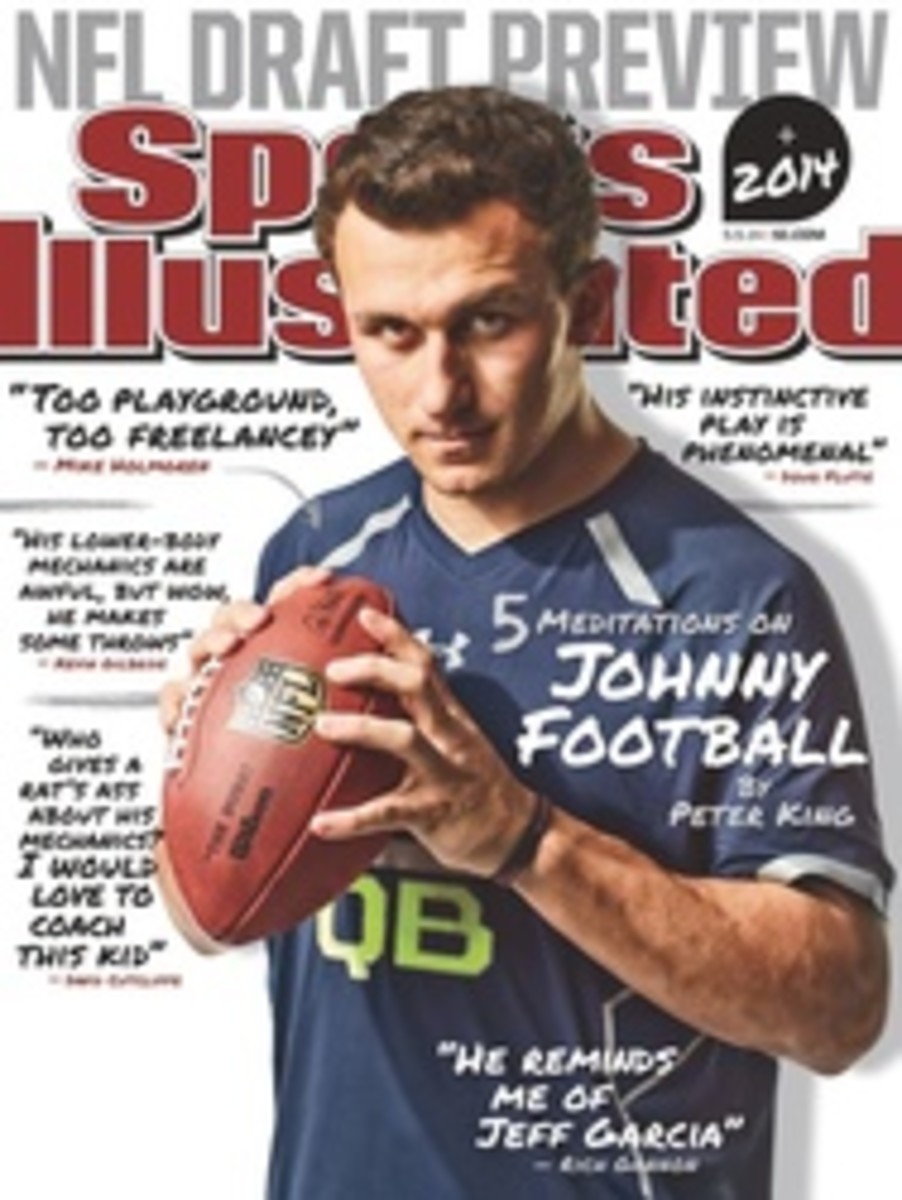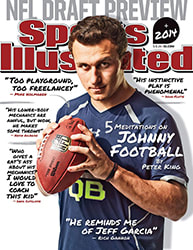
The Whiff of Crisis
Strikeouts are eating the game alive—and the historic lack of balls in play isn't any more fun for fans than it is for hitters. It's a pitcher's game, and that's not a good thing
IT'S NOT LIKELY that the 47,965 people at Tiger Stadium on June 29, 1985, knew they were watching history. They were probably just happy to see the hometown Tigers, the defending World Series champs, close the gap on the Blue Jays, who began the day with a 3½-game lead over second-place Detroit in the AL East. The fans sat through a short rain delay on a wet summer evening, watched Dave Bergman and Chet Lemon chase Toronto starter Luis Leal from the game in the fourth inning with a homer and a single, and saw Detroit righthander Walt Terrell throw the fifth of his 14 career shutouts.
What didn't they see? A strikeout. Aside from the eight walks issued by Terrell, Leal and Blue Jays relievers Dennis Lamp and Ron Musselman, every batter who came to the plate made contact. It's the last time a nine-inning game was played in which no one struck out.
That's unimaginable today. With the first month of the season in the books, more than one of every five batters to walk to the box has walked back to the dugout frowning, cursing and checking his bat for holes. Major league hitters are, for the seventh straight year, on a record pace for whiffs, accelerating the rate of change in the longest statistical trend in the game's history. Through Sunday this year's K rate was 20.8%—ahead of the pace last April (20.2%), a month that set the stage for an alltime seasonlong high (19.9%).
How much has the game changed since that whiffless night in Detroit 29 years ago? That season major league batters hit 25,788 singles and struck out 22,451 times. This season K's not only far outnumber singles—5,977 to 4,273—they are nearly as common as hits of all kinds (6,364).
There's an idea that because run scoring has dropped to levels not seen since before the 1994 strike, the game is back in balance. But in truth it is more out of balance than it has ever been. After being drawn up during Reconstruction, baseball was for most of its history a game of balls in play. The pitcher was more like the center in a football game, triggering the action. Now, pitchers are quarterbacks—completely controlling the action, to the detriment of fans who like to see players hit and field and run. All these strikeouts mean we see less of Andrelton Simmons reinventing shortstop and Billy Hamilton blazing new trails on the base paths and Yasiel Puig doing the jaw-dropping—for better and worse—things he can do when the ball is in play. Strikeouts aren't just eating home runs. They're eating everything in sight, leaving behind a game that's reduced to seven guys standing around watching the pitcher and batter go to war—a distorted, static version of a game that at its best is dynamic and electric.
EXPLANATIONS FOR the strikeout binge have largely focused on hitters and their approaches at the plate, an offensive ethos that owes at least some of its prevalence to the game's empirical revolution. Over the last decade the baseball mainstream has been infiltrated by an idea numbers guys have long espoused: Strikeouts are usually an acceptable side effect of good things such as extra-base hits and walks. With MLB defenses being as good as they are, strikeouts are not much worse in value than the average ball in play, which is as likely to be turned into an out as at any other time in baseball history. Statistically speaking, the payoff for having a "two-strike approach" and simply getting the bat on the ball when behind in the count just isn't worth the investment.
So most modern front offices and batters value power and patience over putting the ball in play. Pitchers cowered for a while in the face of this new approach, which peaked in the 1990s as teams like the Indians and the Yankees worked deep counts and swung from the heels on the rare occasions when bats left their shoulders. But pitchers have discovered the antidote to the take-and-rake philosophy: velocity. Pitchers throw harder now than ever before. The average major league fastball in 2013 was 91.7 mph (per Fangraphs), up nearly 2 mph since 2002. More important, the number of pitchers who throw hard has spiked. Back in '02 there were just 40 pitchers who threw at least 50 innings and averaged 93 mph or better with their fastballs. Last year there were 95. Guys who threw 95 used to be worshipped as gods. Now, every team can have one: 28 pitchers averaged that kind of heat last year.
As velocity has spiked, the game has asked less and less of pitchers. On that June night in Detroit 29 years ago, Walt Terrell went the distance, one of 56 complete games he would toss in his 11-year career. Terrell was no ace, just a mid-rotation starter with a 111--124 career record, but he completed about one of every five starts he made. The active leader in complete games, CC Sabathia, has 37 in his career—one of every 11 starts he's made. Clayton Kershaw, the highest-paid pitcher in baseball history, has completed one of every 16 starts. Max Scherzer, who will command a mammoth contract as a free agent after this season, has never completed a game. In 170 starts he has, in fact, faced just four batters in the ninth inning.
This is the model now: Take talented pitchers and ask them to give as much as they can for as long as they can, with no eye toward in-game durability. Who's picking up the tab for the missing innings? A class of pitchers that did not exist when Terrell was working: fire-breathing relievers developed to throw 15 pitches a night three nights a week. After those 1985 Tigers knocked Leal from the game, Toronto manager Bobby Cox brought in Lamp for three innings and Musselman for two. It was common for relievers to throw multiple innings when they pitched, and an ability to work multiple innings was part of the skill set required to be a major league reliever.
All that matters now is efficiency: Throw as hard as you can for one inning because you'll rarely see a second. This season the average relief outing has lasted 17 pitches, and relievers are striking out 22% of batters faced. The best strike out 30% or 35%, and sometimes more—Braves closer Craig Kimbrel struck out more than half the batters he saw in 2012 and has "slipped" to 47.8% this year. From the beginnings of the sport through 1983, a mere 53 pitchers who threw at least 50 innings in a season struck out one batter per inning. Last year 52 pitchers exceeded that threshold.
The single biggest reason that strikeouts are taking over the game isn't drug testing or a lack of two-strike approaches or anything else hitters are doing. It's that teams have become ruthlessly efficient at breeding pitchers who strike batters out. They select for velocity when drafting or signing amateurs, when promoting pitchers through the minors and when handing out major league relief jobs.
THAT EFFICIENCY may be breaking the game, and it shows no signs of abating. The steadily declining scoring rate in recent seasons—last year the average team scored 4.17 runs per game, the lowest figure since 1992—has less to do with a decline in power in the steroid testing era than it does with the decline in on-base percentage and balls in play. In fact, power, as measured by the percentage of hits that are home runs, is basically unchanged since 2002.
What can be done to arrest this trend? You can't tell pitchers to throw less hard; you can't tell teams to run away from a strategy that works. When it was in a similar jam after the 1968 season, a year that saw the least offense (3.42 runs per game) since the Deadball era, MLB lowered the mound from 15 inches to 10 and redefined the strike zone. The changes dragged the game out of the second Deadball era, but run scoring remained low for a number of years after that (so low that the AL adopted the designated hitter in 1973). There isn't much room to lower the mound past 10 inches. Some have suggested that the mound should be moved back, but that kind of transition would be too radical for pitchers, who already have a hard enough time avoiding injuries.
The best short-term solution lies in the strike zone. As most umpires call it today, the zone is shorter and wider than the one defined by the rule book. It also varies wildly by ump, by batter handedness, by count and by what the catcher does after the pitch has crossed the plate. The overall trend may be hindering hitters: We've traded strikes that can be reached, the ones over the plate but above the waist, for many that cannot—pitches two or three inches off the outside corner that are called in the pitcher's favor. Tightening up the strike zone would give batters a fairer shake and create an environment in which a hurler's control matters more relative to velocity. Calling the rule-book strike zone won't fix everything, but it is the lever most likely to balance the game before strikeout rates reach 25%.
We're watching a version of baseball unlike any ever played. Last week in Atlanta, for instance, the Marlins and the Braves sent 61 batters to the plate, and 28 of them, nearly half, struck out. The game is still enormously popular, but the disappearance of balls in play is eroding its watchability. This may be the natural evolution of baseball. But it isn't what baseball should be.
What can be done to arrest this trend? You can't tell pitchers to throw less hard. The best short-term solution lies in the strike zone.
Lack-of-Contact High
Between 1973, the first year of the DH era, and 1985, the major league strikeout rate fluctuated between a low of 12.5% and a high of 14.0%. It cracked 16.0% in 1995 and has risen since 2000.
[The following text appears within a chart. Please see hardcopy or PDF for actual chart.]
15%
16%
17%
18%
19%
20%
2000
2001
2002
2003
2004
2005
2006
2007
2008
2009
2010
2011
2012
2013
Heat Rises
Over the last decade the velocity of the average major league fastball has increased by 2 mph.
2013
PHOTO ILLUSTRATION
Photo illustration by Sean McCabe
JOHN BAZEMORE/AP (B.J. UPTON); ROBIN ALAM/ICON SMI (ORTIZ); LENNY IGNELZI/AP (DENORFIA); BECK DIEFENBACH/AP (CANO); ROSS D. FRANKLIN/AP (GRANDERSON); RICHARD W. RODRIGUEZ/MCT/ZUMAPRESS.COM (ANDRUS); HARRY HOW/GETTY IMAGES (ROSS); SCOTT CUNNINGHAM/GETTY IMAGES (DESMOND); ALEX BRANDON/AP (J. UPTON); BILL KOSTROUN/AP (LAKE); ROSS D. FRANKLIN/AP (PAGAN); PAUL BEATY/AP (COLABELLO); JARED WICKERHAM/GETTY IMAGES (GOMES); LENNY IGNELZI/AP (PENCE)
PHOTO
BILL KOSTROUN/AP (LAKE)
PHOTO
ROSS D. FRANKLIN/AP (GRANDERSON)
PHOTO
JARED WICKERHAM/GETTY IMAGES (GOMES)
TWO CHARTS

